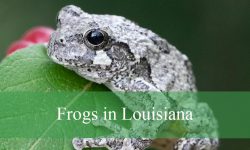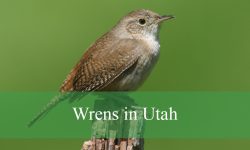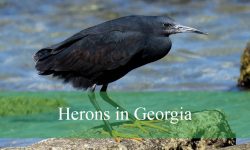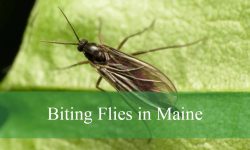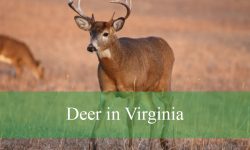Indiana may not be the first place that comes to mind when thinking about hummingbirds, but this state hosts a fascinating variety of these tiny, iridescent birds. From the common Ruby-throated Hummingbird to rare vagrant species, each has unique colors, behaviors, and habits.
Hummingbirds are energetic, acrobatic feeders, darting from flower to flower with astonishing speed. Observing them in gardens, meadows, and parks provides a chance to witness their remarkable agility and vibrant plumage up close.
This guide covers 7 hummingbird species in Indiana, complete with pictures and identification tips. Whether you are a beginner birder or an experienced enthusiast, you’ll learn how to spot, identify, and understand these tiny marvels of the avian world.
Common Hummingbirds Found in Indiana
Ruby-throated Hummingbird (Archilochus colubris)
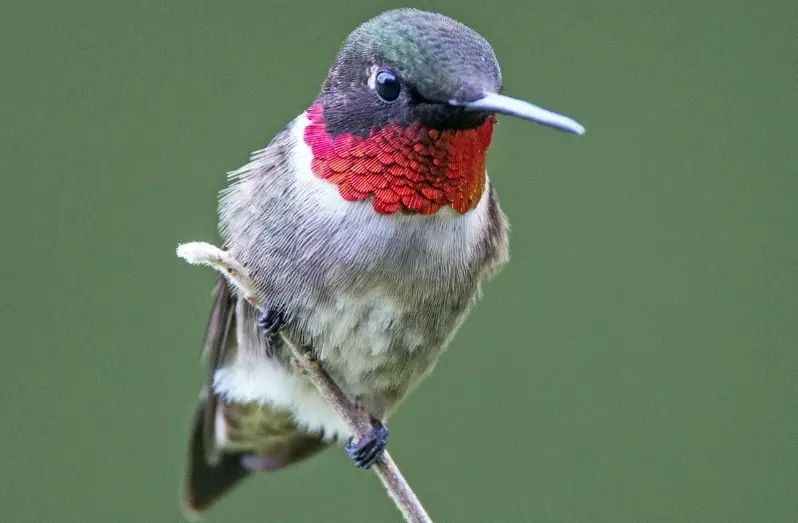
The Ruby-throated Hummingbird is the most common hummingbird in Indiana, especially during the breeding season in late spring and summer. Males are easily recognizable by their bright, iridescent red throat, metallic green back, and white underparts, while females lack the red throat and have a lighter, more subdued coloring. Adults are about 3 to 3.5 inches long and weigh only 2–6 grams, making them tiny yet remarkably agile.
These hummingbirds are highly energetic, feeding primarily on nectar from flowers, but they also consume small insects and spiders for protein. Their wings beat incredibly fast, allowing them to hover and even fly backward, which helps them access nectar from tubular flowers. During the breeding season, males defend feeding territories aggressively to attract females.
Ruby-throated Hummingbirds typically inhabit gardens, wood edges, and meadows. They are particularly attracted to flowering plants such as bee balm, trumpet vine, and cardinal flower. Garden feeders filled with a sugar-water solution also provide a reliable food source, especially for females raising chicks. Nests are tiny, cup-shaped, and often camouflaged with lichens and moss on small tree branches.
These birds are migratory, flying thousands of miles to wintering grounds in Central America, primarily in Mexico. Spring migration occurs from mid-April to early May, while fall migration starts in late July and continues into October. Birdwatchers in Indiana often see large numbers during these periods, particularly near flowering gardens and natural areas with abundant nectar sources.
Rufous Hummingbird (Selasphorus rufus)
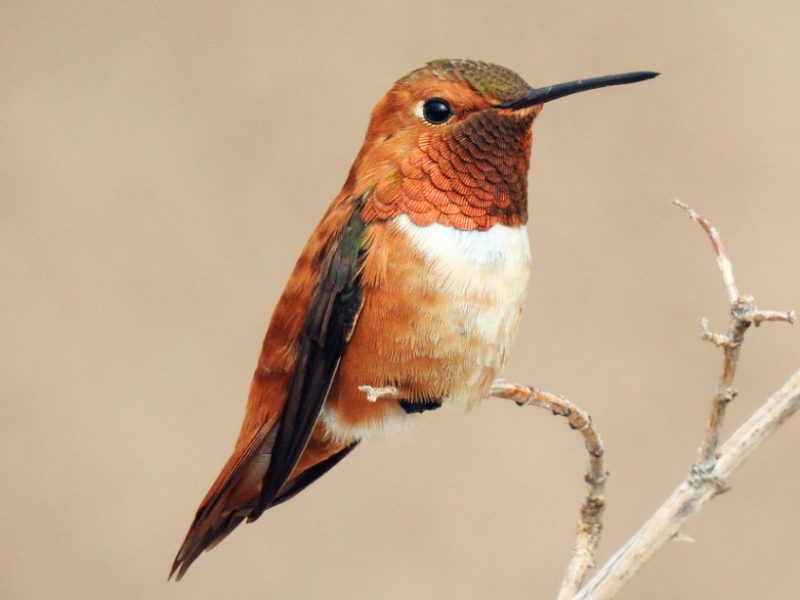
Rufous Hummingbirds are rare visitors in Indiana, usually spotted during migration in spring and fall. Males have a brilliant reddish-orange back and throat, with a contrasting white chest, while females display green backs and orange streaks on the sides. Adults are slightly smaller than Ruby-throated Hummingbirds, measuring 3–3.5 inches long and weighing 3–4 grams.
These birds are highly territorial and feisty despite their small size. Males aggressively defend nectar sources and will chase away larger hummingbirds, including Ruby-throats. They feed primarily on nectar but supplement their diet with tiny insects and spiders. Their flight is fast and direct, and they are capable of hovering for long periods while feeding.
Rufous Hummingbirds prefer open habitats, including forest edges, meadows, and backyards with abundant flowering plants. They are particularly drawn to trumpet-shaped flowers and hummingbird feeders. Their nesting habits are similar to other Selasphorus species, with small cup-shaped nests built on horizontal branches.
Migration is the most notable aspect of Rufous Hummingbirds in Indiana. These birds breed in the Pacific Northwest and Alaska and migrate down the western U.S., with occasional vagrants reaching the Midwest. Observing them in Indiana is uncommon but a thrilling sight for bird enthusiasts, usually in May or September.
Calliope Hummingbird (Selasphorus calliope)
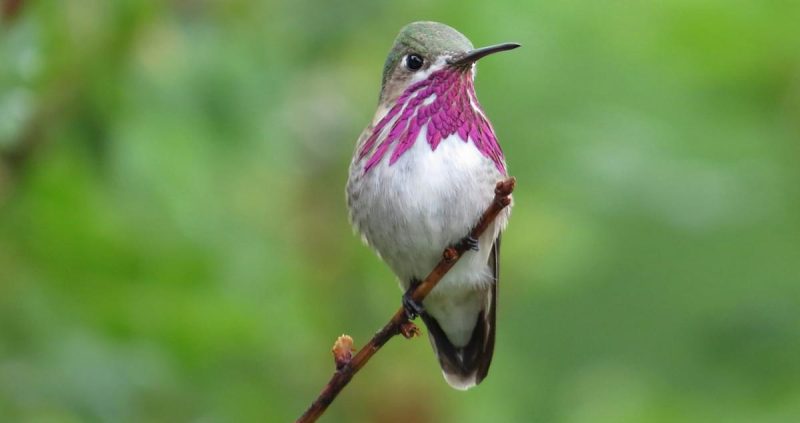
The Calliope Hummingbird is the smallest bird in North America, measuring only 3 inches in length and weighing around 2–3 grams. Males have striking magenta throat streaks that resemble thin brushstrokes, while females are muted green above and pale below. Its diminutive size makes it delicate-looking, yet it is an energetic and agile feeder.
Calliope Hummingbirds feed on nectar and insects, using their rapid wing beats to hover near flowers. Despite their small size, males are territorial and will chase intruders from their feeding territories. Their long, slender bills allow them to access deep, tubular flowers efficiently.
These hummingbirds prefer open woodlands, shrublands, and forest edges. They often visit feeders during migration, though their rarity in Indiana means sightings are sporadic. Nests are tiny, built with plant down, spider silk, and lichen for camouflage on slender branches.
Calliope Hummingbirds breed in the northwestern U.S. and Canada and migrate to Mexico for winter. In Indiana, they are extremely rare, usually spotted during spring or fall migration. Birders treasure these sightings because of their uniqueness and tiny size, making them a highlight of hummingbird observation in the Midwest.
Black-chinned Hummingbird (Archilochus alexandri)

The Black-chinned Hummingbird is a rare visitor to Indiana, primarily during migration periods. Males have a black throat with a faint purple base, metallic green back, and grayish-white underparts, while females resemble Ruby-throated Hummingbirds but with a darker throat area. Their size ranges from 3 to 3.5 inches in length, weighing 3–4 grams.
These hummingbirds are highly active and feed on nectar from tubular flowers and hummingbird feeders, supplementing their diet with small insects. Males are territorial and display aggressive behavior to defend their feeding grounds, particularly during breeding seasons in their native range.
Black-chinned Hummingbirds inhabit deserts, canyons, and open woodland edges in their normal range, favoring areas with abundant nectar. In Indiana, they are usually found in gardens with feeders or flowering plants during rare migration visits. Their nests are small, camouflaged, and placed on thin branches or shrubs.
Migration is the most significant factor for this species in Indiana. They breed in the western U.S. and spend winters in Mexico, occasionally appearing as vagrants in the Midwest. Observing them is unusual, making each sighting noteworthy for local birders.
Broad-tailed Hummingbird (Selasphorus platycercus)
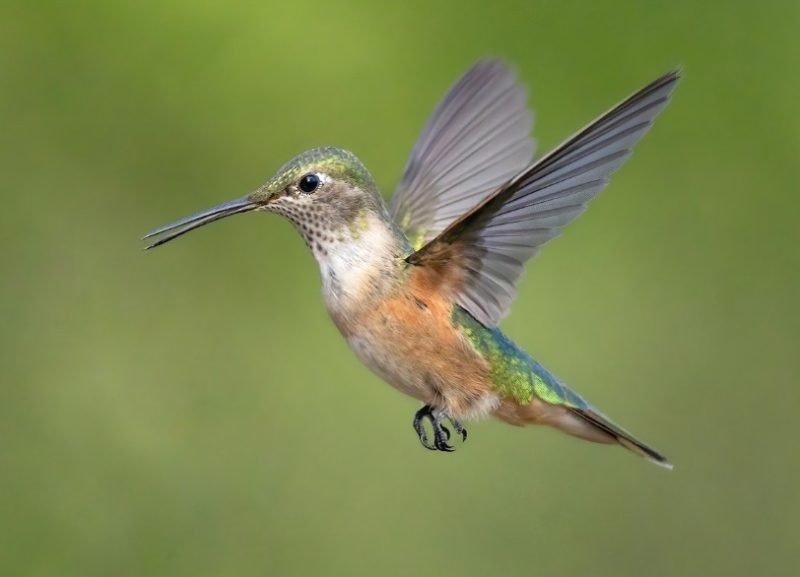
Broad-tailed Hummingbirds are rare in Indiana, typically spotted during fall migration. Males are characterized by a bright red throat and metallic green back, while females have green backs and white underparts with some faint throat streaks. Adults measure around 3–3.5 inches and weigh about 3–4 grams.
These hummingbirds are active feeders, hovering near flowers to sip nectar and catching small insects for protein. Males are known to defend territories aggressively, especially around high-density nectar sources. Their long wings and rapid wingbeats allow them to hover efficiently and maneuver quickly through shrubs and trees.
Broad-tailed Hummingbirds prefer open woodlands, mountain meadows, and gardens with abundant flowering plants. In Indiana, they are considered accidental visitors, so sightings are extremely rare. Nests are tiny, cup-shaped, and often decorated with lichens for camouflage.
Their primary migration route is from western U.S. breeding grounds to Mexico. Indiana sightings are unusual and exciting for birdwatchers, occurring mostly in late summer or early fall when vagrant individuals wander eastward beyond their typical range.
Allen’s Hummingbird (Selasphorus sasin)
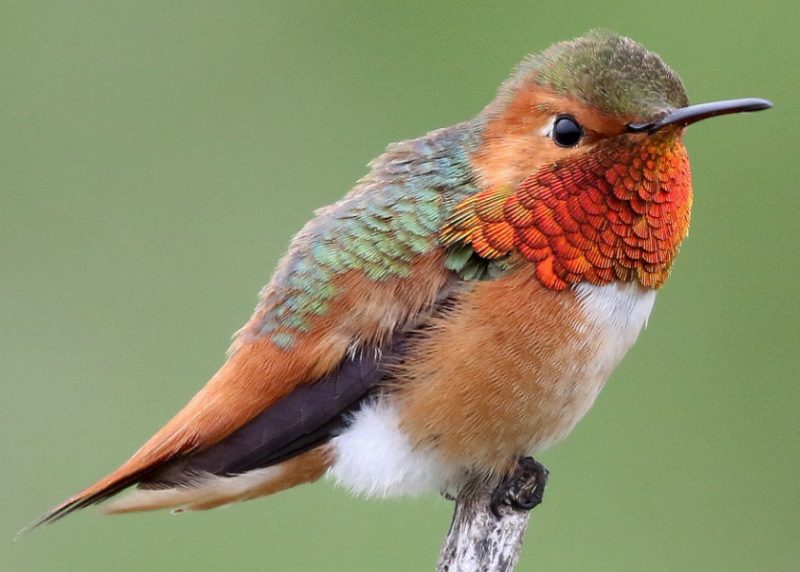
Allen’s Hummingbird is an extremely rare and accidental species in Indiana, usually seen only by dedicated birders. Males feature bright orange-red throats and green backs, while females have green backs and paler underparts with faint streaking. Adults measure about 3 inches and weigh 2.5–3.5 grams.
These hummingbirds feed on nectar and insects, hovering skillfully near flowers. Males are territorial and will chase away other hummingbirds when feeding opportunities are scarce. Their small size and fast flight make them hard to detect in areas where they are accidental visitors.
Allen’s Hummingbirds prefer coastal scrub, oak woodlands, and gardens in their native range along the western U.S. In Indiana, they are extremely rare, and sightings are notable for their uniqueness rather than habitat preference. Nesting behavior in Indiana is virtually unknown due to their rarity.
Migration for Allen’s Hummingbird usually involves movement along the Pacific Coast, with most wintering in Mexico. Indiana records are accidental, mostly in fall or late summer, and provide a rare treat for birdwatchers seeking unusual hummingbird species in the Midwest.
Anna’s Hummingbird (Calypte anna)
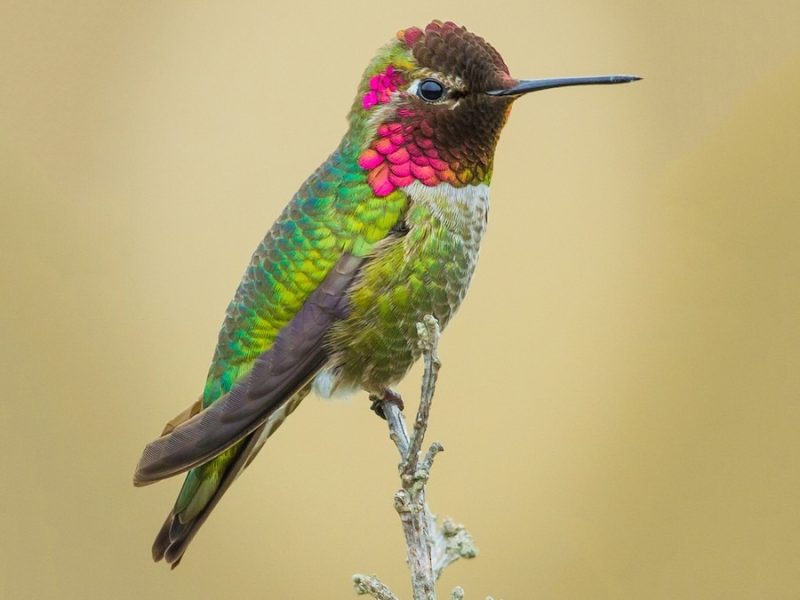
Anna’s Hummingbird is a non-migratory vagrant occasionally spotted in Indiana. Males have an iridescent red crown and throat with metallic green back and sides, while females are greenish-gray with a whitish underbelly. Adults measure 3–3.5 inches and weigh 3–4 grams, slightly larger than some other small Selasphorus species.
These hummingbirds feed on nectar from a variety of flowers and sugar-water feeders, as well as small insects. They hover skillfully and can perform remarkable aerial maneuvers to defend feeding territories. Males often display courtship dives with a loud trill produced by their tail feathers.
Anna’s Hummingbirds typically inhabit coastal scrub, gardens, and parks in their native range on the western U.S. In Indiana, they are vagrants and may appear in urban or suburban areas with abundant feeders or flowering plants. Nests are small and camouflaged with lichen and spider silk.
Although generally resident in their native range, Anna’s Hummingbirds occasionally wander far east, including Indiana. Sightings are unpredictable, mostly in winter or early spring, and are considered a highlight for birdwatchers who may only encounter them once in several years.
Best Places and Times to See Hummingbirds in Indiana
Hummingbirds in Indiana are easiest to spot in areas with abundant nectar sources. Residential gardens with flowering plants such as bee balm, cardinal flower, trumpet vine, and salvia attract these tiny birds reliably. Suburban backyards with hummingbird feeders are particularly good for close-up observation. Natural areas like wood edges, meadows, state parks, and nature preserves also provide excellent habitats, offering both food and cover for nesting hummingbirds. Arboretums and botanical gardens with native flowering plants are additional hotspots for birdwatchers.
The best times to observe hummingbirds align with their migration and breeding cycles. Spring migration, from mid-April to early May, brings Ruby-throated Hummingbirds into the state for breeding. Summer, especially June through August, is prime for spotting breeding birds, mainly Ruby-throats, actively feeding and defending territories. Fall migration, from late July through October, can bring rarer species like Rufous, Broad-tailed, and Calliope Hummingbirds into Indiana as they pass through. Early mornings and late afternoons are ideal times of day, when hummingbirds are most actively feeding at flowers and feeders.
FAQs About Hummingbirds in Indiana
What species of hummingbirds can be seen in Indiana?
Indiana is home to several hummingbird species, including the Ruby-throated Hummingbird, Rufous Hummingbird, Calliope Hummingbird, Black-chinned Hummingbird, Broad-tailed Hummingbird, Allen’s Hummingbird, and Anna’s Hummingbird. The Ruby-throated Hummingbird is the most common, while the others are rare or vagrant visitors.
When is the best time to see hummingbirds in Indiana?
The prime times are during spring migration (mid-April to early May), summer breeding season (June to August), and fall migration (late July to October). Early mornings and late afternoons are the most active periods for feeding.
Where are the best places to spot hummingbirds in Indiana?
Hummingbirds are often found in gardens with flowering plants like bee balm, cardinal flower, trumpet vine, and salvia. Suburban backyards with feeders, wood edges, meadows, state parks, nature preserves, and arboretums are also excellent locations.
What do hummingbirds eat in Indiana?
They primarily feed on nectar from flowers and sugar-water feeders. They also eat small insects and spiders to obtain protein, which is especially important during breeding and migration periods.
Are there any rare hummingbirds that occasionally visit Indiana?
Yes, species such as Rufous, Calliope, Black-chinned, Broad-tailed, Allen’s, and Anna’s Hummingbirds are rare vagrants in Indiana. Sightings of these species are uncommon and are often considered special for birdwatchers.
How can I attract hummingbirds to my backyard in Indiana?
Planting native, nectar-rich flowers and setting up hummingbird feeders with a sugar-water solution is effective. Keep feeders clean and full during migration and summer months, and provide shelter with shrubs or trees to encourage visiting birds.

